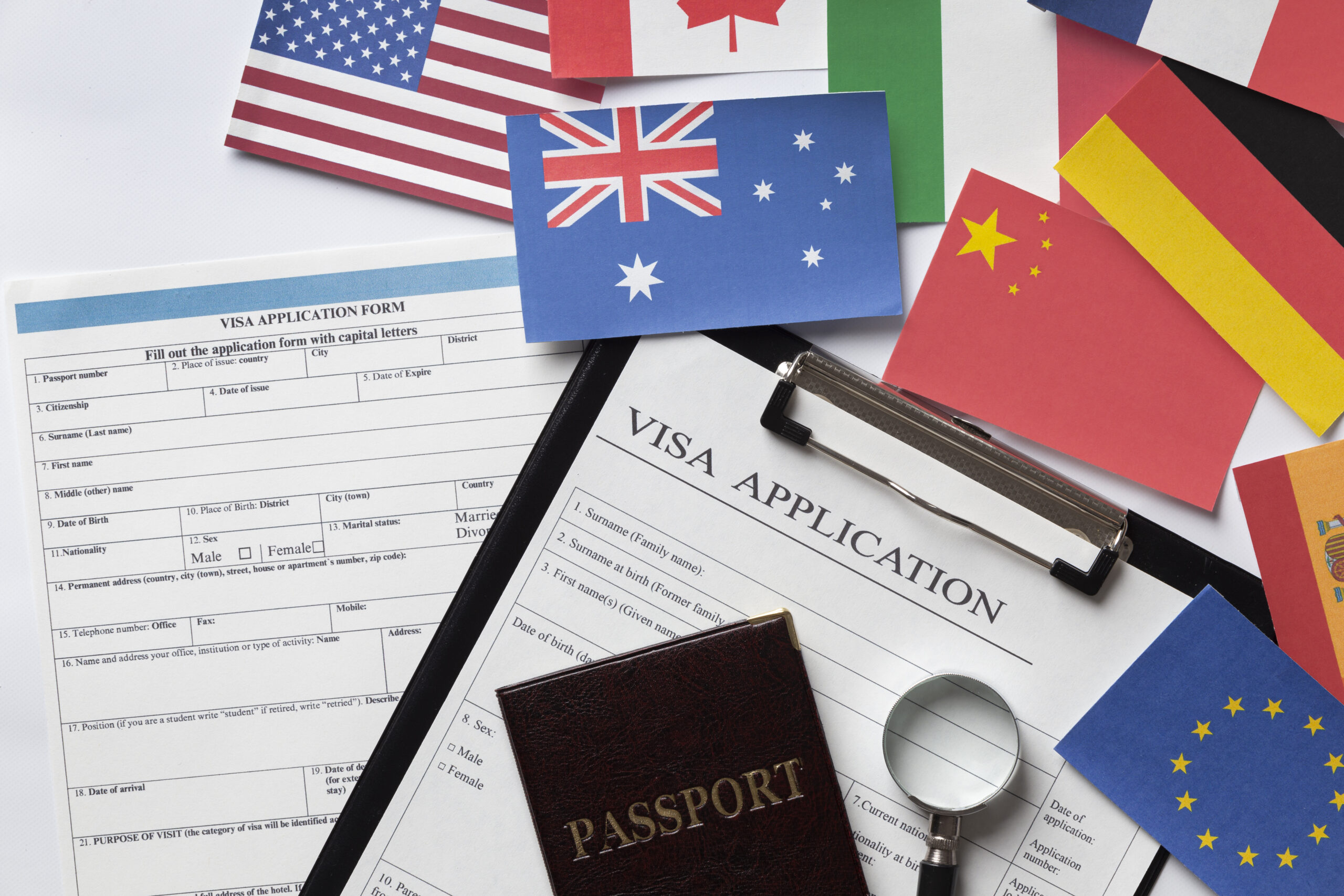
Your child has built a life in Australia, bought a home, started a family, and now you’re watching your grandkids grow up over video calls. For many parents, that distance becomes harder to bear with time. Occasional visits don’t compare to being present for real moments: school concerts, weekend barbecues or simply a hug at the end of the day. If you’re ready to stay longer and reunite with your family, applying for a Parent Visa may be the next step. But first, you must pass the eligibility for a parent visa in Australia.
To be eligible for a Parent Visa in Australia, you must have a child who is a settled Australian citizen, permanent resident or eligible New Zealand citizen. You’ll also need to pass the balance of family test, meet health and character requirements and apply under the correct visa subclass. Some options offer permanent residency, while others allow temporary stays with long-term pathways.
In this guide, we’ll cover who qualifies, what documents you’ll need and which visa might suit your family’s situation best.
Eligibility for a Parent Visa in Australia – A Quick Overview
To qualify for a Parent Visa in Australia, you must meet several key conditions. Your child must be an Australian citizen, permanent resident or eligible New Zealand citizen who is settled in the country. You’ll also need to meet the balance of family test, showing that most of your children live in Australia.
Depending on the visa type, age matters, especially for the aged visa categories. Every applicant must pass health and character checks. Some visas also require financial assurance through an Assurance of Support.
You may apply from within or outside Australia, based on the visa subclass. It’s not only about rules, it’s about showing that your strongest family connections are in Australia and you genuinely want to stay.
Need Parent Visa Advice? Speak with Best Immigration Lawyers
Struggling to meet the eligibility requirements for a Parent Visa in Australia? You’re not alone, and you don’t have to figure it out on your own. At Best Immigration Lawyers, we help families across Australia, including Sydney and wider NSW, VIC and QLD, handle the complex visa process with clarity and care. Whether it’s sponsorship, the balance of family test or choosing the right visa subclass, our trusted agents are here to guide you step by step.
We’ve helped hundreds reunite with loved ones, and we’re ready to do the same for you. Call us today on 0292830888 or fill out our contact form to get started. Your family’s future is worth it.
Types of Parent Visas in Australia
Australia offers a range of parent visa options depending on your circumstances, location and how quickly you want to migrate. These visas have different costs, timelines and rights attached to them. Choosing the right type ensures a smoother process and better results.
Here are the five key types of Parent Visas available in Australia:
- Contributory Parent Visa (Subclass 143)
This is a permanent visa for parents of an Australian citizen or permanent resident. It requires a higher visa application charge but offers faster processing and full permanent residency rights. It allows parents to live in Australia permanently, access Medicare and eventually apply for citizenship.
You must be outside Australia at the time of the grant. Many families choose this visa for its certainty and long-term benefits, despite the cost.
- Contributory Aged Parent Visa (Subclass 864)
This visa is designed for older parents who meet the Australian age pension age. It also comes with permanent residency but can be applied for while onshore, which is helpful for parents already in the country on a valid visa.
The Contributory Aged Parent visa allows you to stay in Australia while your application is processed. The main condition is that the applicant must be of pensionable age and meet all health and character requirements.
- Aged Parent Visa (Subclass 804)
A lower-cost alternative to the contributory stream, this visa is also for parents of pension age. However, the processing times are much longer, often stretching to decades.
It’s best for families willing to wait and who can support the parent financially in the meantime. Applicants must be onshore at the time of application and decision.
- Parent Visa (Subclass 103)
This is a non-contributory visa with minimal application charges. However, the wait time is substantial, sometimes over 30 years. It’s suited for those who do not wish to invest large sums but can endure the long queue.
Applicants must be outside Australia when the visa is granted. It offers permanent residency once approved.
- Contributory Parent (Temporary) Visa (Subclass 173)
This is a temporary two-year visa that allows parents to live in Australia and later apply for the permanent Subclass 143 visa. It’s ideal for those who want to spread out the visa cost.
While on this visa, you can live, work and study in Australia. However, it does not lead directly to Medicare unless you later switch to a permanent option.
Eligibility Requirements for a Parent Visa in Australia
To apply for a Parent Visa, the Australian Government sets clear conditions. Below are the most important eligibility factors every parent must meet to qualify for the visa.
- Sponsorship by an Eligible Child
The parent must be sponsored by a child who is an Australian citizen, a permanent resident or an eligible New Zealand citizen. The sponsoring child must be over 18 years old and settled in Australia, usually having lived in the country for at least two years.
Sponsorship includes a formal commitment to support the parent financially and help them integrate into the community.
- Meeting the Balance of Family Test
This is a key requirement. At least half of the parents’ children must live permanently in Australia, or more of the parents’ children must live in Australia than in any other single country. This test ensures the parents’ strongest family ties are with Australia. It applies to all permanent parent visa applications.
- Health and Character Requirements
Every applicant must pass a health examination and obtain police clearances. Australia prioritises public health and safety, so these checks are essential.
Any existing health issues won’t always result in rejection, but must be declared. Certain communicable diseases or criminal history can affect outcomes.
- Financial Stability or Assurance of Support (AoS)
For many parent visa types, an Assurance of Support is mandatory. This is a legal commitment by the sponsor (and sometimes an assurer) to repay any social security payments made to the parent within a set period.
It reduces the burden on Australian taxpayers and proves that the parent will be financially supported.
- Meeting Age Requirements (For Aged Visas)
For aged parent visas, the applicant must reach the qualifying age for the Australian Age Pension, which varies slightly depending on date of birth. Being over this age at the time of application is critical.
This rule applies to Subclass 804 and Subclass 864 only and ensures the visa serves its target group, older, dependent parents.
- Visa History and Current Location
Applicants must comply with their visa conditions if they’re already in Australia. For onshore visas, being lawfully present is required. You can’t apply for an onshore parent visa if you’ve overstayed a visa or breached previous conditions.
Also, the visa subclass may dictate whether you must be inside or outside Australia at the time of application and grant.
- No Outstanding Debts to the Australian Government
You cannot be approved if you owe money to the government. These debts must be repaid or arranged before the visa decision.
This shows good faith and financial responsibility, both key factors in a successful application.
- Genuine Intention to Stay and Comply with Visa Conditions
You must intend to live in Australia lawfully and permanently. False information or non-genuine intentions can lead to visa refusal.
This rule supports the integrity of the immigration system, protecting opportunities for those who are sincere.
Benefits of a Parent Visa in Australia
Getting a Parent Visa is more than a legal process. It’s a personal journey. It means closeness, support and a better quality of life in one of the world’s safest countries.
Here are the most valued benefits of holding a parent visa in Australia:
- Live in Australia permanently with your children and grandchildren
- Access to Medicare, Australia’s public healthcare system
- Apply for Australian citizenship after meeting residency requirements
- Work and study in Australia without restrictions
- Sponsor other family members for visas in the future
- Enjoy social benefits and aged care services, depending on visa type
- Get access to world-class infrastructure, safety and stability
- Live in a multicultural society with excellent community support
- No age limits for contributory parent visa applicants
- Eligibility for travel in and out of Australia for five years
- Reconnect with family and be present for life’s important moments
Summing Up
Bringing your family together under one roof is more than a dream. It’s possible with the right guidance. Understanding the eligibility for a Parent Visa in Australia is the first step toward a united future. Each requirement serves a purpose, ensuring that you and your loved ones can build a stable, supported life in a country that values family.
Whether you’re looking to join your children in Sydney, NSW or planning for long-term settlement, the right visa path can open doors. Stay informed, stay prepared and take the next step toward the life you’ve been waiting for.













Recent Comments